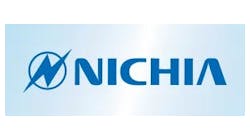I was honored to participate in another Cities 2020 technology roundtable hosted in San Antonio, TX from March 6 to 7. San Antonio Chief Information Officer, Craig Hopkins, hosted 23 of his counterparts from the US and abroad for an intense and informative 2-day event. Organized by Cities Today, Cities 2020 is a global gathering of city officials who exchange best practices and lessons learned.
Now in its fourth year, lighting continues to play a central role in the Cities discussion as a transformative, ubiquitous infrastructure and a digital pathway that can enable CIOs’ smart city agendas. Connected street lighting remains the primary element for integrating connected technologies in cities and addressing key civic initiatives like safety, livability and sustainability. At the same time, exciting innovations like LiFi and urban farming are opening the door to new conversations about secure connectivity in government buildings and local food production/availability for nearby communities.
Inspired Collaboration
The theme of this year’s event revolved around collaboration, and there were some inspiring examples on display. Craig Hopkins and his recently confirmed successor, Brian Dillard, for example, embody what it means to collaborate. Under the leadership of Mayor Nirenberg, San Antonio is charting a joint path with the San Antonio Water System, CPS Energy, VIA (municipal transit authority), San Antonio River Authority, citizens and the private sector. Smart SA is a truly integrated approach where three innovation districts will house multiple technology pilots to demonstrate how technology can address different city priorities.
Sharing proven approaches was also a key part of the roundtables as city representatives listened and learned. The CIOs emphasized their desire to “steal” each other’s best ideas.
My colleague Chris White, President of the Americas, shared some of Signify’s best practices from the United States that demonstrate how light can propel a smart city agenda forward. First, he talked about our work with the City of Baltimore. Working closely with the Mayor’s office and the Dept. of Transportation, our R&D scientists analyzed the frequency of 311 alerts related to faulty street lighting infrastructure. After cross-checking these statistics with others on public safety, the DoT selected, where to place control nodes to remotely check on the status of their lights. Knowing that a street was adequately illuminated provided the cross-functional teams in the city with the insights they needed. To read more check out our case study on the peer-to-peer platform The Atlas.
Second, he described the recent opening of the Hernando De Soto Bridge in Memphis, TN – the bookend to the impressive Harahan Bridge which originally opened in 2016. Mighty Lights orchestrated a wonderful celebration on October 27, 2018. Chris described how many more residents and visitors are taking advantage of the revitalized waterfront recreational area now that the area is connected and illuminated. The celebratory lighting draws people in for special events, for personal events like wedding pictures and on everyday evenings. The impact on economic development and the draw for additional investment has made the connected lighting installation a cornerstone of the city’s waterfront renaissance.
Finally, Chris described the recent opening of the Mario M. Cuomo Bridge in New York. This latest addition to the impressive engineering marvels over the Hudson River is the first example in the world of a single dashboard for the operation and maintenance of architectural and functional lighting on a bridge. Increasingly, DoTs need to have reliable, remote access to the status of their assets to ensure services levels and enhance their own operational efficiency.
Pilot, Prototype, PoC, or what?
Another striking point of discussion was around pilots and prototyping, especially given the complex procurement frameworks under which cities must operate. Everyone had an opinion on the terminology and how to fund these types of projects. Jennifer Sanders, Executive Director of the Dallas Innovation Alliance, talked about how her non-profit organization has facilitated the city’s technology testing. San Antonio described the innovation zones. Others described the different thresholds for pilots and how they create criteria for scalability.
Signify partners with many organizations and cities to pilot advanced lighting technology. We have found these mock-ups for decorative lighting or pilots for remote lighting management invaluable to ensure our own continuous improvement and our customers. Please reach out to us if you’d like to get a hands-on view of our Interact IoT platform. Interact City for remote street light management and operation has been proven in more than 50 countries around the world supporting more than $1.5million connected street lights. Interact Landmark is a unique offering to manage and maintain architectural installations such as unique artworks like the Bay Lights in San Francisco or key gateways like the Mario M. Cuomo Bridge in New York.
One of the highlights of the gathering was when Aurora, IL CIO Michael Pegues presented his strategic plan for Smart Aurora. With an impressive and diverse private sector background, Michael is bringing all his experience back to his hometown. Keep a lookout for this one!
Cities Today will also be posting a full round up of the meeting soon.





